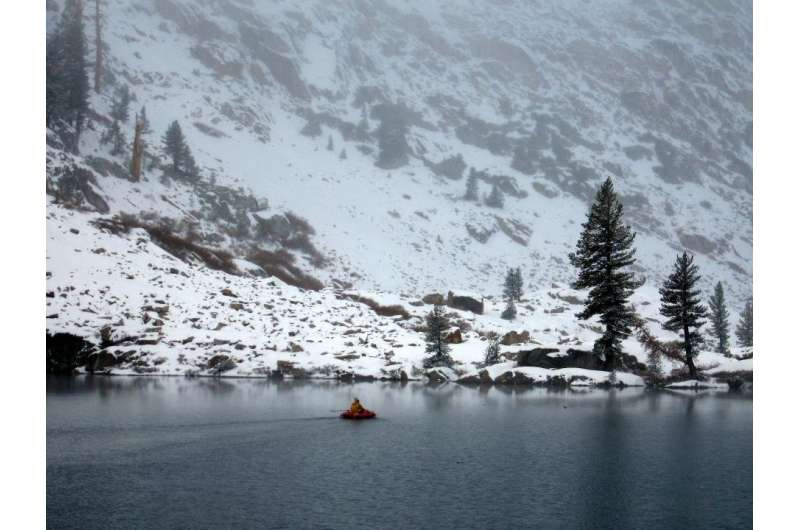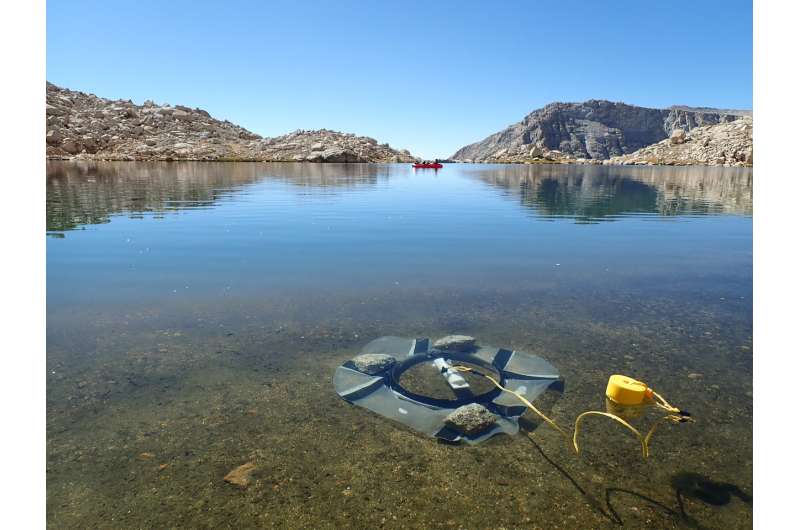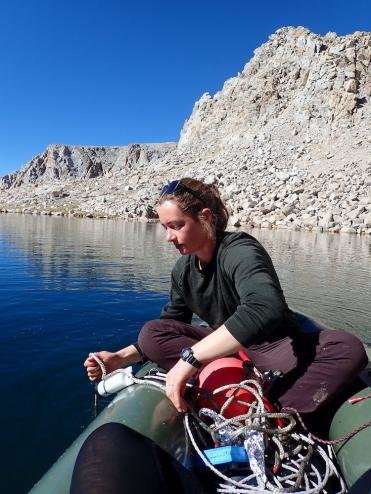How climate change is affecting small Sierra Nevada lakes

Scientists at the University of California, Davis, are taking the temperature—and other measurements—of lakes of all sizes and shapes throughout the mountains of California to see how climate change is affecting them and what, perhaps, can be done about it.
A study published this month in the journal Limnology and Oceanography Letters shows that, despite rapidly warming air temperatures, spring snowpack is the biggest predictor of summer warming in small Sierra Nevada lakes.
The study examined more than 30 years of climate and lake temperature data at Emerald Lake, a long-term study site in Sequoia National Park. It was led by UC Davis with colleagues at UC Santa Barbara and UC Riverside.
High rates of warming air
The researchers found that summer air temperatures at Emerald Lake are warming at a rate of 1.0 degree Celsius, or 1.5 degrees Fahrenheit, per decade.
"That's huge," said lead author Steven Sadro, a UC Davis assistant professor in the Department of Environmental Science and Policy and a member of the Tahoe Environmental Research Center. "That's as high a rate of warming as nearly anywhere on the planet. It's also consistent with what you'd find in a lot of mountain regions, which are warming at rates as high as those seen in the Arctic, in many cases."

Snow a buffer
Yet these small alpine lakes are somewhat buffered from the higher air temperatures because they respond primarily to variation in the snow. The amount of snow controls when the lake becomes free of ice and can absorb radiation from the sun, which heats the water.
"That's not to say that there is no climate warming signal," said Sadro. "In drought years, when the role of snow is small, we find a warming trend consistent with the rate of warming found in other lakes throughout the world."
Climate affects phytoplankton, too
A companion study conducted at Emerald Lake and published in June in the journal Water Resources Research found that changes in snowpack also increased the abundance of phytoplankton in Emerald Lake. If droughts continue to be more frequent, high-elevation lakes in the Sierra are expected to become more productive. Researchers are not yet certain how that might affect the lakes. More phytoplankton could mean more food for lake organisms, but it could also impact lake clarity, which is often an indicator of ecosystem health.
Together, the papers show that yes, climate change is impacting these lakes and that its effects are somewhat buffered by snowpack. But what that means for the greater ecology of the area is still unclear.

A current project may provide additional answers.
Filling in the gaps
There are upwards of 14,000 small lakes in the Sierra Nevada. This past summer, UC Davis limnologists and colleagues began installing high-frequency instruments in nearly 20 of these lakes, which stretch from Castle Lake in Northern California to Emerald Lake in the southern Sierra.
The project is called the California Mountain Lake Observatory Network, and it's being conducted through Sadro's lab by Adrianne Smits, a National Science Foundation postdoctoral fellow at UC Davis.
As weather events occur, be they storm, drought, wildfire or clear skies, the instruments capture data about water temperature, dissolved oxygen, light levels and other factors. Data from these lakes will be used to develop models to help predict how all the other lakes in the Sierra are responding to changes in climate.
"Castle and Emerald lakes are both long-term study sites, and together they provide unique bookends to the entire Sierra Nevada mountain range," Sadro said. "We're trying to fill in everything in between to better predict how lakes across the Sierra are expected to change."
This ongoing research could help resource managers identify which lakes are most sensitive to climate impacts and target them for mediation.
More information: Steven Sadro et al. Climate warming response of mountain lakes affected by variations in snow, Limnology and Oceanography Letters (2018). DOI: 10.1002/lol2.10099
Steven Sadro et al. Effects of Climate Variability on Snowmelt and Implications for Organic Matter in a High‐Elevation Lake, Water Resources Research (2018). DOI: 10.1029/2017WR022163
Journal information: Water Resources Research
Provided by UC Davis


















